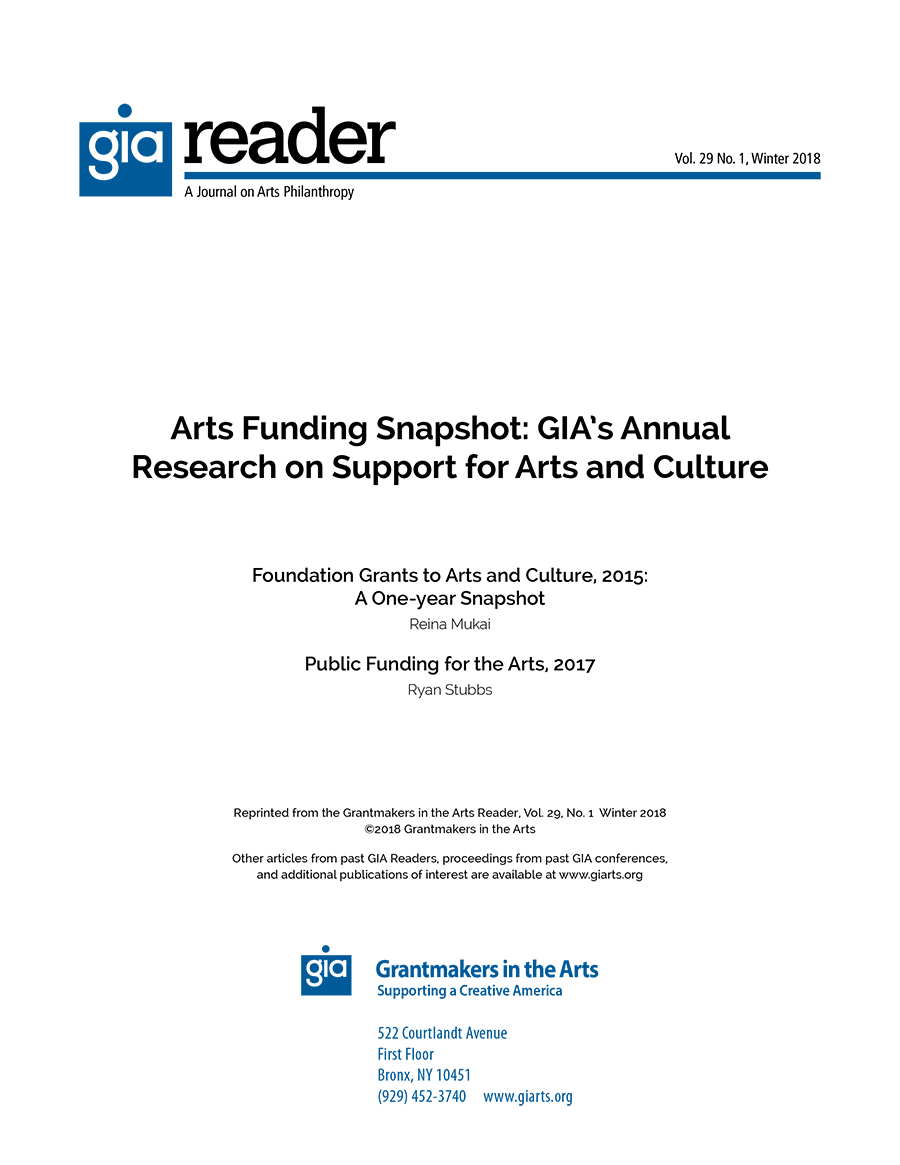Cultural Policy
The Los Angeles County Arts Commission voted unanimously to create the first-ever LA County Department for Arts and Culture. The motion instructs the County to transition the LA County Arts Commission to a stand-alone County department starting July 1 and to complete the transition by fiscal year 2019.
Read More...The arts and culture sector continues to have conversations on multiple levels about how to advance the causes of equity, inclusion, and diversity. The discussion is not new, but the momentum toward implementing clear action steps is building. A new level of understanding of the ways in which racial and social inequities are the result of complex systemic issues has given rise to a realization that the path to truly effective solutions will require deep, and deeply challenging, institutional change.
Read More...In this moment of upheaval, challenge, and resistance for our country, the phrase “speaking truth to power” has taken on a new urgency. Rarely asked amid the fervor pervading the corner offices and Twitter feeds of so many of our foundations and other civic institutions in recent months, however, is an important question: Where does our “truth” come from? How do we make judgments about truth in so subjective a field as arts and culture?
Read More...As arts funders, we know that extensive research has shown that the presence of arts and culture activities at the neighborhood level can improve health and safety and promote a sense of well-being among residents. But how do we identify what activities already exist in a community and, as important, where there are gaps so we can be proactive in advancing a community’s livability?
Read More...Download:
![]() Arts Funding Snapshot: GIA’s Annual Research on Support for Arts and Culture (332Kb)
Arts Funding Snapshot: GIA’s Annual Research on Support for Arts and Culture (332Kb)
During the past two decades, cultural planning practice in the United States has fallen behind that in parts of the world where cultural plans are required in city general plans, broader definitions of culture have been adopted, more domains of city planning have been integrated, and theoretical debate has progressed further. In the United States there is neither a field of cultural planning nor of cultural planners.
Read More...“Is the stadium we passed going up or coming down?” asked Kristen Calhoun, ArtChangeUS founding program director. Suddenly the previously strained community meeting we were attending came alive. Kristen and I were in Detroit in July 2016 to plan ArtChangeUS REMAP: Detroit, and we had repeatedly driven by the mass of steel girders, not knowing if it represented Detroit’s past or future. Artist and activist Invincible ill Weaver had organized a series of gatherings for us to meet with grassroots cultural change makers.
Read More...If there is in society a collective consciousness, then art is its imagination. Imagination is different from fantasy, which conjures up desires divorced from reality; imagination is creative problem solving that assesses what is available and re-creates it into something new, better, or self-satisfying. Detroit has been short on many things over the past fifty years — economic prosperity, functioning city services, racial justice, validation — but it is astonishingly long on imagination and creative problem solving.
Read More...A society’s values are the basis upon which all else is built. These values and the ways they are expressed are a society’s culture. The way a society governs itself cannot be fully democratic without there being clear avenues for the expression of community values, and unless these expressions directly affect the directions society takes. These processes are culture at work.
— Jon Hawkes, The Fourth Pillar of Sustainability: Culture’s Essential Role in Public Planning
There are many arguments for continued federal funding to the National Endowments for the Arts and the Humanities (NEA and NEH), the Corporation for Public Broadcasting (CPB), and the Institute of Museum and Library Services (IMLS) — all agencies that would be eliminated by President Trump’s 2018 budget.
Read More...
